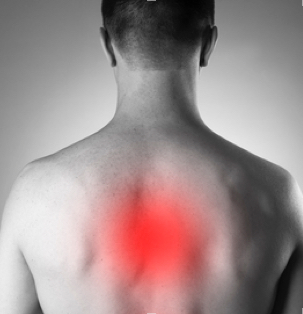Signs and Symptoms
Pain is felt between or around the shoulder blades. It may be felt centrally over the spine or felt on either side of the spine. Pain can often be felt suddenly as a result of an awkward movement or may present itself gradually. Thoracic pain is commonly felt with twisting or sideways movements.
There are many causes of thoracic pain, most common to present to physiotherapy is an injury to the soft tissue, namely muscles, ligaments, fascia, the facet joints of the vertebra or the disc itself.
Thoracic intervertebral joints can refer pain to the side or to the front of the chest. Prolapse of a thoracic disc is uncommon but the disc can narrow with the ageing process. The symptoms of Osteoporosis can be felt in this region as the vertebrae weaken and change shape causing rounding of the shoulders.
At Bray Physiotherapy, we take a thorough history to determine the exact location of pain, it’s aggravating and easing factors and mechanism of onset. A physical examination includes assessment of movement, detection of spasm and stiffness and pain and tenderness in the muscles and joints of the comparable area. A neurological examination is performed if nerve root irritation is described.
Our Treatment & Expertise
The aim of our treatment is to reduce pain, restore movement and function, minimise muscle wasting and to restore our patient to a fully functioning pre-injury state as quickly as possible. We place a huge emphasis on a “Hands-On” approach including massage, manual therapy and personalised exercise prescription. Electrotherapy including therapeutic ultrasound and interferential therapy helps to reduce inflammation and pain; dry needling or acupuncture can also be used.
Having identified the cause and nature of the problem we aim to correct dysfunction and educate patients to prevent recurrence. If poor posture at home or at work has contributed, we include a postural assessment and offer advice to change the faulty ergonomics of sitting, standing or lifting.
Exercise therapy is a vital component to the treatment of the patient with thoracic pain. Exercises will restore full range of motion and provide stability to the area as it is healing. A home exercise programme is provided and encouraged, and return to full fitness is desired.


